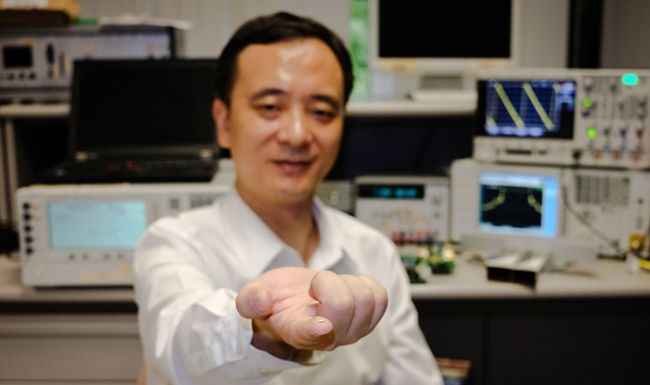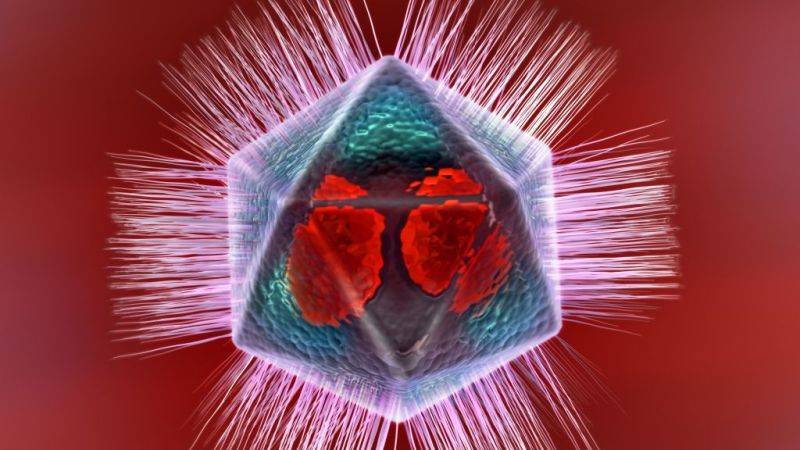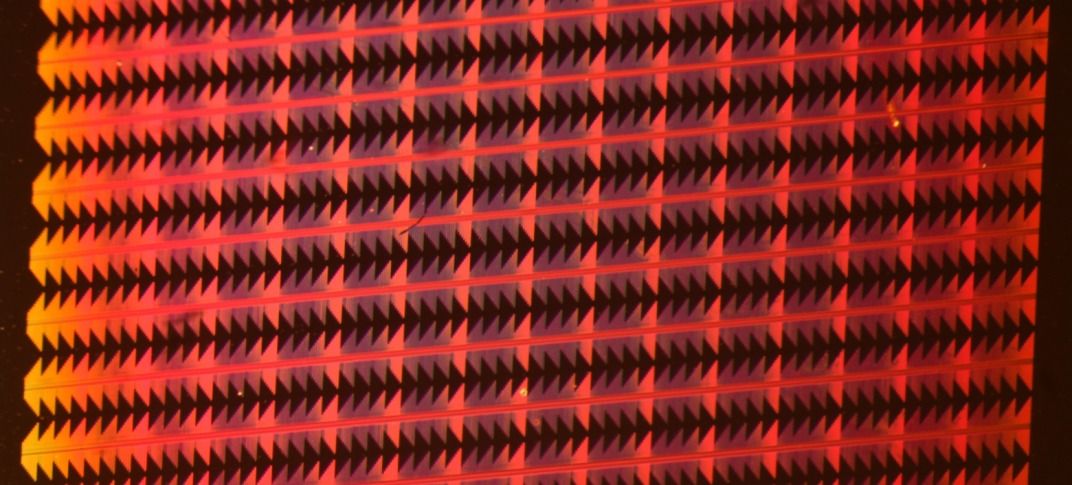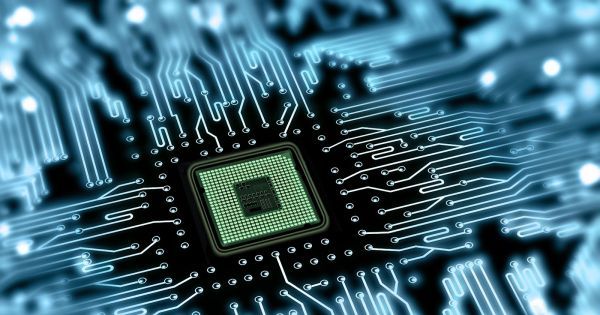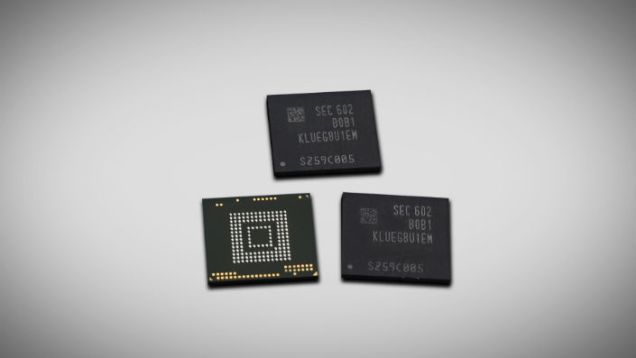How Legos, lasers, and reindeer are building the interplanetary internet.
Category: computing – Page 838
Biography : Scott Aaronson is an Associate Professor of Electrical Engineering and Computer Science at MIT. His research interests center around the capabilities and limits of quantum computers, and computational complexity theory more generally. He also has written about consciousness and personal identity and the relevance of quantum mechanics to these issues.
Michael Cerullo: Thanks for taking the time to talk with me. Given the recent advances in brain preservation, questions of personal identity are moving from merely academic to extremely practical questions. I want to focus on your ideas related to the relevance of quantum mechanics to consciousness and personal identity which are found in your paper “Ghost in the Quantum Turing Machine” ( http://arxiv.org/abs/1306.0159 ), your blog “Could a Quantum Computer Have Subjective Experience?” ( http://www.scottaaronson.com/blog/?p=1951 ), and your book “Quantum Computing since Democritus” ( http://www.scottaaronson.com/democritus/) .
Before we get to your own speculations in this field I want to review some of the prior work of Roger Penrose and Stuart Hameroff ( http://www.quantumconsciousness.org/content/hameroff-penrose…-or-theory ). Let me try to summarize some of the criticism of their work (including some of your own critiques of their theory). Penrose and Hameroff abandon conventional wisdom in neuroscience (i.e. that neurons are the essential computational element in the brain) and instead posit that the microtubules (which conventional neuroscience tell us are involved in nucleic and cell division, organization of intracellular structure, and intracellular transport, as well as ciliary and flagellar motility) are an essential part of the computational structure of the brain. Specifically, they claim the microtubules are quantum computers that grant a person the ability to perform non-computable computations (and Penrose claims these kinds of computations are necessary for things like mathematical understanding). The main critiques of their theory are: it relies on future results in quantum gravity that don’t exist; there is no empirical evidence that microtubules are relevant to the function of the brain; work in quantum decoherence also makes it extremely unlikely that the brain is a quatum computer; even if a brain could somehow compute non-computable functions it isn’t clear what this has to do with consciousness. Would you say these are fair criticisms of their theory and are there any other criticisms you see as relevant?
Scott Aaronson: Yes, I think all four of those are fair criticisms! I could add a fifth criticism: Penrose’s case for the brain having non-computational abilities relies on an appeal to Gödel’s Incompleteness Theorem, to the idea that no machine working within a fixed formal system can prove the system’s consistency, whereas a human can “just see” that it’s consistent. But like most mathematicians and computer scientists, I don’t agree with that argument, because I think a machine could show all the same external behavior as a human who “sees” a formal system’s consistency. So then, the argument devolves into one about indescribable inner experiences, of “just seeing” (for example) that set theory is consistent. But if we wanted to rest the case on indescribable inner experiences, then why not forget about Gödel’s Theorem, and just talk about less abstruse things like the experience of falling in love or tasting strawberries or whatever?
Researchers from the Moscow Institute of Physics and Technology (MIPT) have for the first time experimentally demonstrated that copper nanophotonic components can operate successfully in photonic devices – it was previously believed that only gold and silver components could do so. Copper components are not only just as good as components based on noble metals; they can also be easily implemented in integrated circuits using industry-standard fabrication processes. “This is a kind of revolution – using copper will solve one of the main problems in nanophotonics,” say the authors of the paper. The results have been published in the scientific journal Nano Letters.
The discovery, which is revolutionary for photonics and the computers of the future, was made by researchers from the Laboratory of Nanooptics and Plasmonics at MIPT’s Centre of Nanoscale Optoelectronics. They have succeeded, for the first time, in producing copper nanophotonic components, whose characteristics are just as good as those of gold components. It is interesting to note that the scientists fabricated the copper components using the process compatible with the industry-standard manufacturing technologies that are used today to produce modern integrated circuits. This means that in the very near future copper nanophotonic components will form a basis for the development of energy-efficient light sources, ultra-sensitive sensors, as well as high-performance optoelectronic processors with several thousand cores.
The discovery was made under what is known as nanophotonics – a branch of research which aims, among other things, to replace existing components in data processing devices with more modern components by using photons instead of electrons. However, while transistors can be scaled down in size to a few nanometres, the diffraction of light limits the minimum dimensions of photonic components to the size of about the light wavelength (~1 micrometre). Despite the fundamental nature of this so-called diffraction limit, one can overcome it by using metal-dielectric structures to create truly nanoscale photonic components. Firstly, most metals show a negative permittivity at optical frequencies, and light cannot propagate through them, penetrating to a depth of only 25 nanometres. Secondly, light may be converted into surface plasmon polaritons, surface waves propagating along the surface of a metal. This makes it possible to switch from conventional 3D photonics to 2D surface plasmon photonics, which is known as plasmonics. This offers the possibility of controlling light at a scale of around 100 nanometres, i.e., far beyond the diffraction limit.
I have been encouraging my nephews to consider this as well.
After nearly three decades of searching for ways to build superfast computers that operate on the principles of quantum mechanics, the reality of a fully-fledged quantum computer is moving closer, says professor Andrew Yao Chi-chih, dean of the Institute for Interdisciplinary Information Sciences, Tsinghua University, Beijing.
“Quantum computing is no longer viewed as a fad, or a scientist’s pie in the sky,’’ Yao told an audience of students, faculty, and invited guests during his presentation at a Hong Kong University of Science and Technology (HKUST) 25th Anniversary Distinguished Speakers Series event on January 28. Yao also took the opportunity to explain his rationale for quantum computing to be recognised as a Great Science. “Great Science involves the intersection of different scientific disciplines to create new knowledge that allows the exploration of the previously unimaginable,’’ stressed Yao, adding that Great Science also lifts the human spirit.
Yao believes computers built on the principles of quantum physics could revolutionise the information processes used for a range of applications, including precision weather forecasting and replacement aircraft fuselage wind tunnel testing. He also pointed out that increasingly powerful computers are needed to solve fresh challenges.
I like the concept; however, as long as “connected AI” is connected to the Net or any network infrastructure, or platform that is connected to a network and the network infrastructure/ net can be hacked; companies and consumers will still finding themselves closely monitoring the AI systems & machines which could cost companies more money and not less money. So, this does place a concern on the investments being made to develop technology that may not be fully adopted as it once was hoped.
Australians could be working alongside artificial devices and robotic devices within the next 20 years, according to a landmark report by the Federal Government’s agency for scientific research.
The CSIRO has launched a report claiming that rapid advances in automated systems and artificial intelligence meant that robotic devices would be able to perform many tasks more quickly, safely and efficiently than humans.
The report, commissioned by the Federal Government in partnership with the Australian Computer Society, Boston Consulting Group and ANZ, “mapped out the changing landscape of our workforce as we move through huge technological shifts”, according to Minister for Employment, Senator Michaelia Cash.
Scientist have created tiny supercapacitators that can be embedded directly on a microchip, a game-changer that promises smaller, more powerful devices.
As the semiconductor industry begins to adjust to a new roadmap, research on microchips is being focused less on Moore’s Law (the arithmetic increase through time in the power of microchips) but instead on incremental changes related to the developing Internet of Things, such as increasing RAM or integrating gyroscopes or GPS sensors.
An important part of these changes include building more efficient energy storage devices to power these additional sensors. This development of high-performance batteries would go a long way to enable long-lived sensors and radio frequency identification (RFID) tags. The problem, however, is that miniaturized energy storage devices are not only difficult to produce but they often fail to function well with other electronics.
I love high capacity things. So when Samsung announced it’s producing 256 GB flash storage that can be used in mobile devices, I swooned. The memory is two times faster than the previous generation of Universal Flash Storage (UFS) memory, meaning that phones will not only have greater storage capacities, but also breeze reading and writing operations.
Nonetheless, there are probably still a lot of you thinking this isn’t a huge deal. You might say that the most popular Android phones already support microSD expandable memory, or that Android 6.0 Marshmallow supports adoptive memory, making it easier for your phone to read and write to expandable storage. But that would be missing the point.
Expandable storage has always been a bandage on a much greater problem plaguing Android phones: the cost of high capacity flash memory was too high and the size was too bulky to include in older smartphones. Plus, expandable memory has never performed nearly as well as internal UFS memory. Although Android 6.0 Marshmallow supports a new adoptive memory feature that basically treats external memory as internal memory, neither of Android’s two biggest vendors, LG or Samsung, support the feature in their new smartphones.


